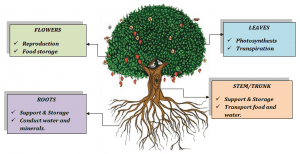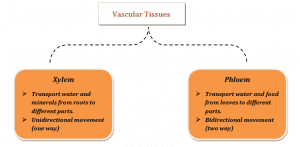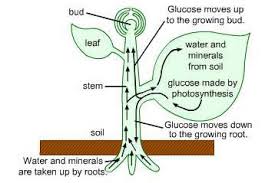Plants are living organisms upon which every other living organism depends for food, shelter, etc. Recollect how transportation in animals takes place. The animal body consists of a circulatory system, excretory system, digestive system and much more to carry out their daily functions. Despite the fact that plants aren’t made up of distinctive organ systems like animals, they are a crucial element of the universe. What helps plants to perform their roles? How do plants meet their elementary requirements? Let’s have a glimpse of transpiration and transportation in plants.
Transportation in plants

Plants consist of leaves, stems, branches, roots and flowers. Each part of the plant has a distinctive role to play. They perform their functions to support its life as well as others.
We know leaves are the kitchen of plants; leaves prepare food via photosynthesis. They depend on the environment for their basic requirements, such as air, water, minerals, light, etc. Each element enters into plant cells through different pathways like water and minerals through roots while light and air through leaves. Hence, let’s classify a transportation in plants into two stages:
- Transportation before photosynthesis:
Water is an essential element for photosynthesis. Roots absorb water and minerals using their hairs and transport them to leaves.
- Transportation after photosynthesis:
Once the food is prepared by leaves, it has to be transported to non-photosynthetic parts of plants such as roots, stems, and other parts.
In plants, there are two types of tissues which are specialized for conduction and transportation. This type of tissue system is called vascular tissue.


Transpiration
Plants excrete excess water through stomatal pores present on leaves. This process of evaporation of water from leaves is called transpiration. When the leaves transpire, a pull is created inside the plant, which compels roots to suck water from the soil. Thus, transpiration provokes conduction in plants.
To learn more with video lessons, download BYJU’S -The Learning app.
Comments